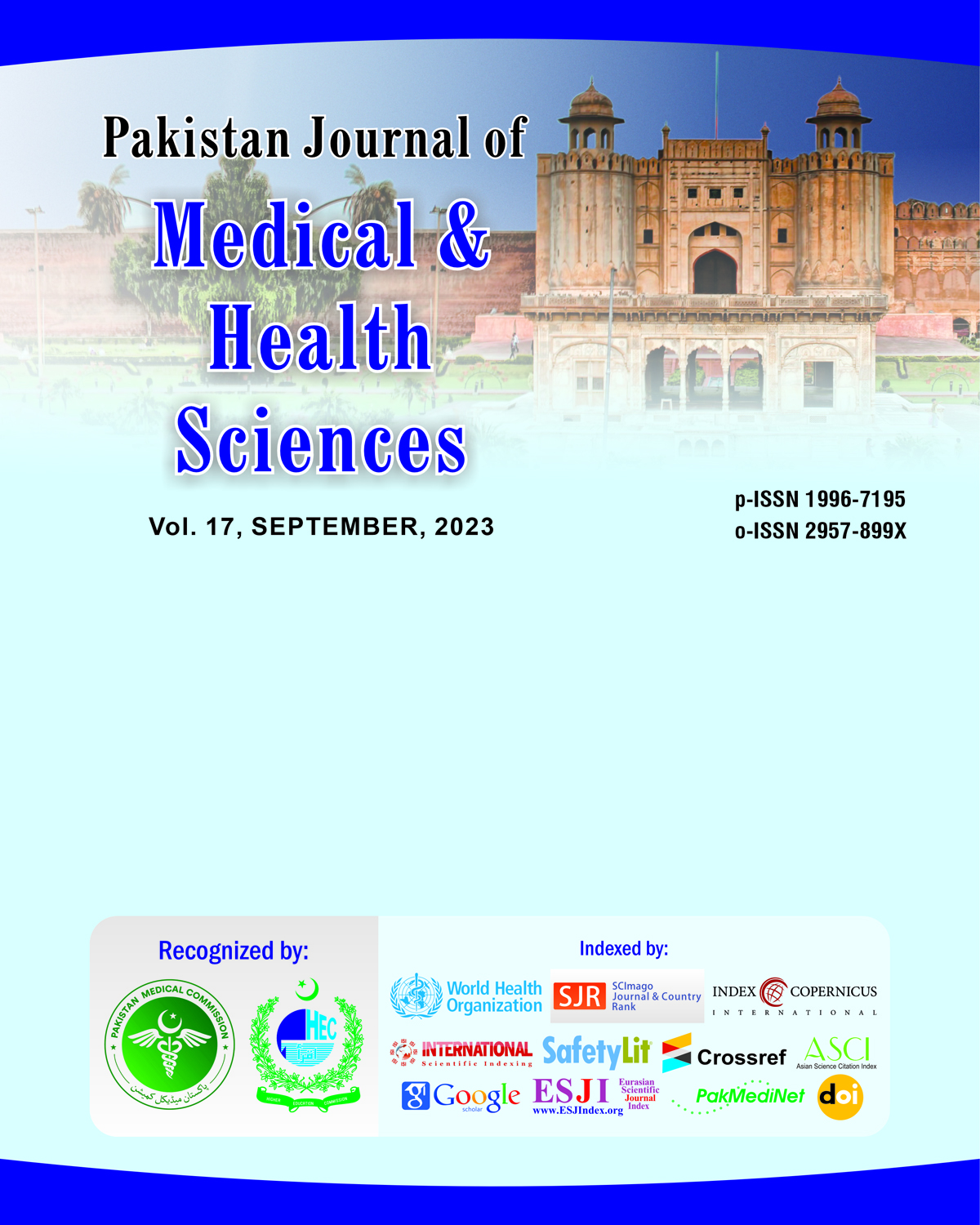Prevalence and Clinical Implications of Electrolyte and Mineral Imbalances in Diabetic and Non-Diabetic Individuals: A Multicenter Cross-Sectional Study in Pakistan
DOI:
https://doi.org/10.53350/pjmhs2023170938Abstract
Background: Electrolyte and mineral imbalances are frequently observed in individuals with diabetes mellitus and are associated with systemic complications, including cardiovascular and renal risks. Despite their clinical significance, such imbalances remain underexplored in the local population.
Aim: To evaluate the levels of serum electrolytes (Na⁺, K⁺, Cl⁻) and minerals (Ca²⁺, Mg²⁺) in diabetic and non-diabetic individuals and to investigate their correlation with glycemic control and disease progression.
Method: A cross-sectional study was conducted involving 300 participants (150 diabetics, 150 non-diabetics) aged 30-70 years. Serum electrolyte and mineral levels were measured using ion-selective electrodes and spectrophotometry. Glycemic control was assessed via HbA1c levels. Statistical analyses were performed to identify significant differences and correlations.
Results: Diabetic individuals showed significantly lower levels of Na⁺, Ca²⁺, and Mg²⁺ and higher levels of K⁺ and Cl⁻ compared to non-diabetics. Poor glycemic control (HbA1c > 8%) was strongly linked to hypomagnesemia (47%) and hypocalcaemia (38%), highlighting the impact of uncontrolled diabetes on electrolyte balance.
Conclusion: Electrolyte and mineral imbalances are prevalent in diabetic individuals, especially those with poor glycemic control. Regular monitoring and targeted interventions are essential to mitigate associated complications and improve overall diabetes management.
Keywords: Diabetes mellitus, electrolyte imbalance, glycemic control, serum magnesium, hypocalcaemia, metabolic monitoring.
Downloads
How to Cite
Issue
Section
License
Copyright (c) 2023 Pakistan Journal of Medical & Health Sciences

This work is licensed under a Creative Commons Attribution 4.0 International License.


